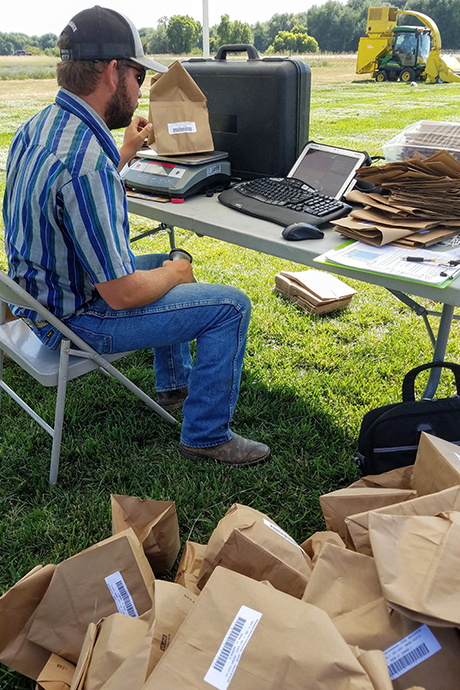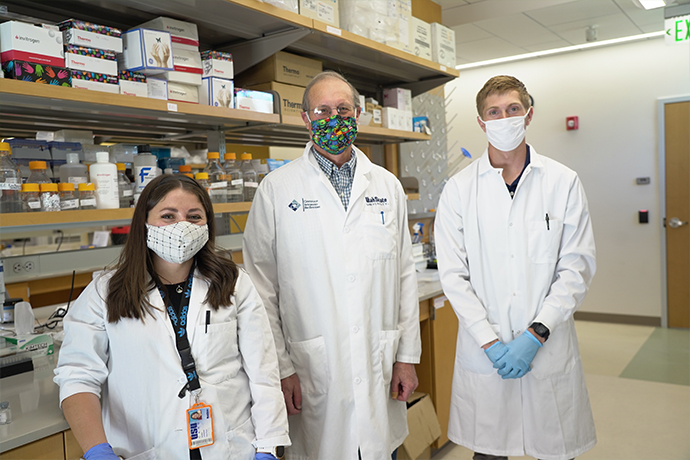At the start of the spring semester, our students were applying for internships and writing mini-grants to support summer research. Our faculty were teaching classes, drafting research proposals, and writing manuscripts with their graduate students for submission to professional journals. Our research staff and technicians were developing innovative strategies for experiments in labs, farms, and fields. Then, our day-to-day lives changed immensely in March as the novel coronavirus spread through the U.S. and USU, and like other colleges and universities, we moved to exclusively online education and mainly remote work.
The new problems caused by COVID-19 did not do away with the challenges our researchers were tackling back in March. Our faculty, staff, and students have continued to do impactful research aimed at solving today’s agriculture challenges – food security and quality, climate change and variability, sustainable energy production, reliable and clean water supplies, human and animal health, sustainable community development, and scientific and agricultural literacy.
Research activities continued in many of our venues, both on campus and in the field, with faculty, staff, and students finding creative ways to do their work safely because animals and plants growing at research farms require ongoing care. Seasonal work can’t be abandoned without upending graduate students’ programs and while researchers may do work in home offices, but there are many reasons people don’t have home biochemistry labs.
Many of us decamped to home offices, armed with reams of data and remote access to software and online resources needed to finish writing our backlog of manuscripts or finally spend some time reading the stack of journal articles that had been on our desk for months. Students shifted their training and lab schedules, some focused on studying for qualifying exams or writing literature reviews to prepare for dissertation defenses.
Researchers continued to be active in labs and on research farms, running experiments and collecting valuable samples, all while adding new precautions to their usual activities to help ensure safety for themselves and others, including wearing personal protective equipment and following special hygiene protocols to ensure that research spaces are clean.

CAAS researchers were on track to match prior years' research funding before the coronavirus outbreak, and because we are well-qualified to help the nation address that particular challenge, additional funds have been awarded that propelled our research funding total even higher. Indeed, faculty and student scientists in our Institute for Antiviral Research have rarely been busier than they are this year as they ramped up their work dramatically and acquired new funding to test possible therapeutics to combat COVID-19.
The college ended the fiscal year with $25.25 million in research funding, the most in at least the past decade, and likely the highest in our history, though changes in the college and ways of tracking research dollars make it difficult to determine.
All of this work is essential in meeting the college's research mission: Through innovative, high-impact research, the faculty, students, and staff of the College of Agriculture and Applied Sciences work to discover new knowledge that contributes to the global scientific community and serves people in Utah and beyond. Together, we seek to develop and apply sustainable solutions that meet the agricultural, economic, environmental, community, and health challenges of today and tomorrow through scientific inquiry and sharing knowledge. Even though COVID-19 has disrupted the ways our researchers normally work, be assured that our work continues in creative and innovative ways.
- Total CAAS research funding for the past fiscal year was $25.25 million, the highest in the past decade (at least), and represents 45% growth over last year's numbers.
- Increased funding was driven largely by more support for basic research ($12.9 million for FY20). While we do a great deal of applied research solve practical problems, basic research is driven by curiosity to discover fundamental aspects of phenomena or observed facts. CAAS had the highest total of any college at USU for basic research funding in the past fiscal year. We are proud that discovery happens here!
- Research grants and contracts are not concentrated in one area or with a handful of faculty "superstars." Evaluating funding divided among departments shows that most had banner years individually.


